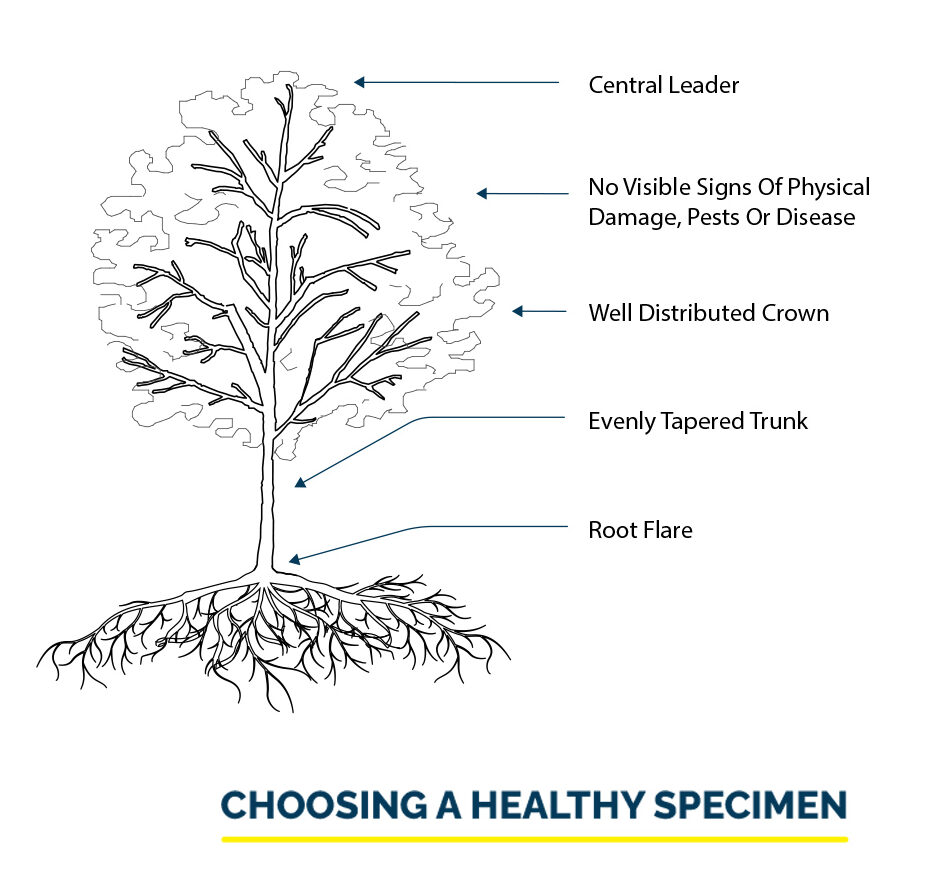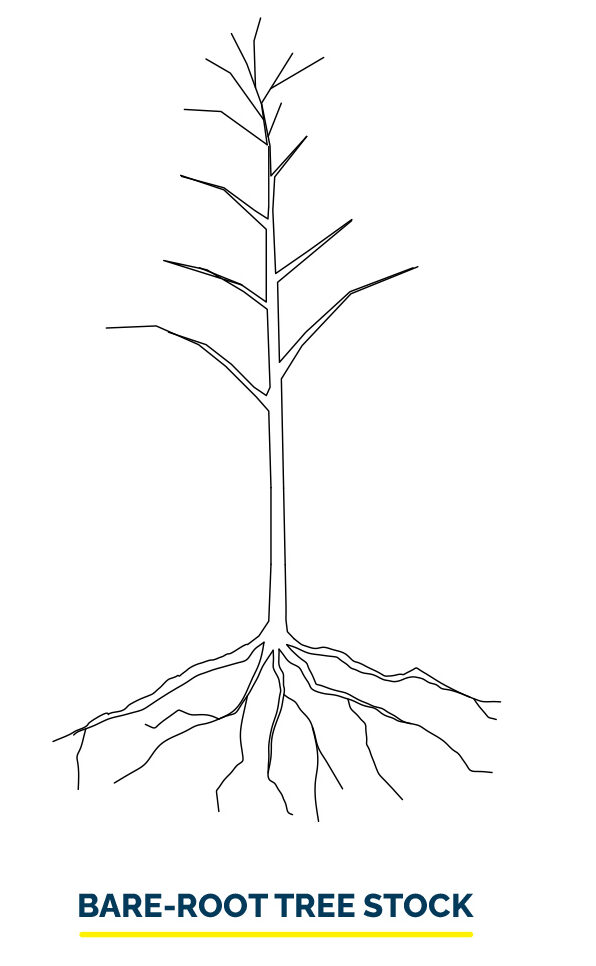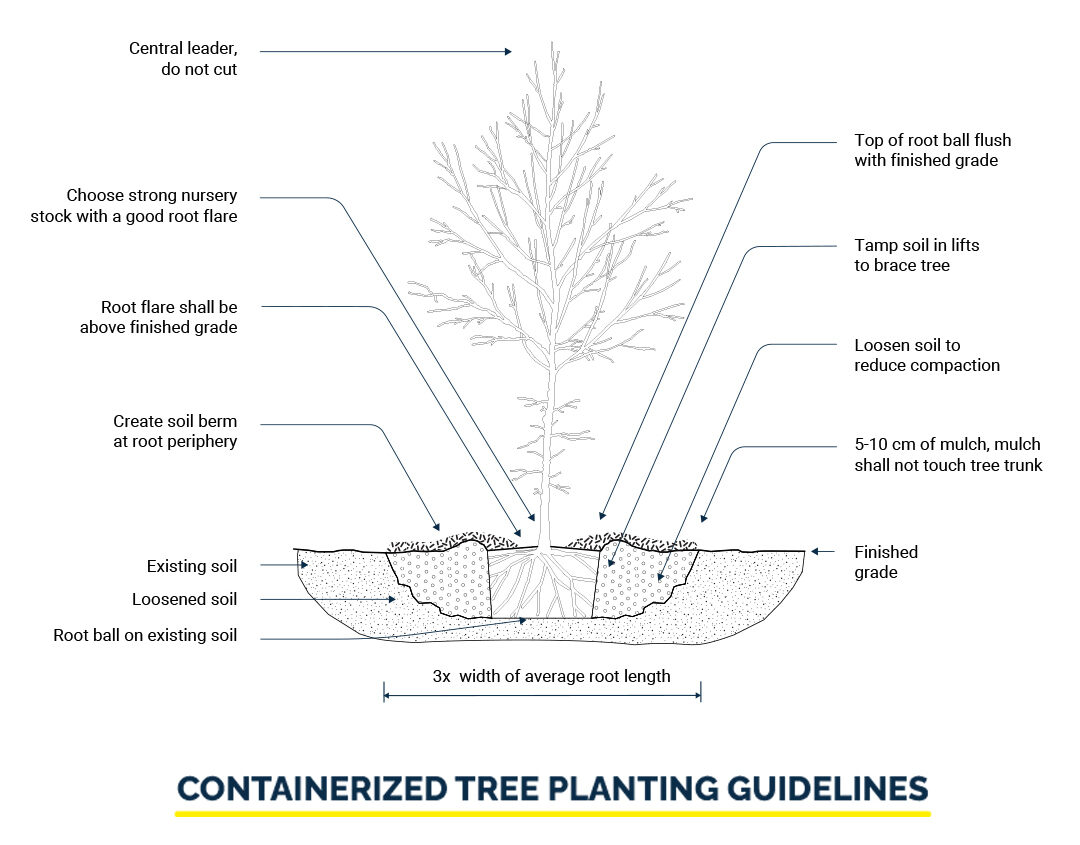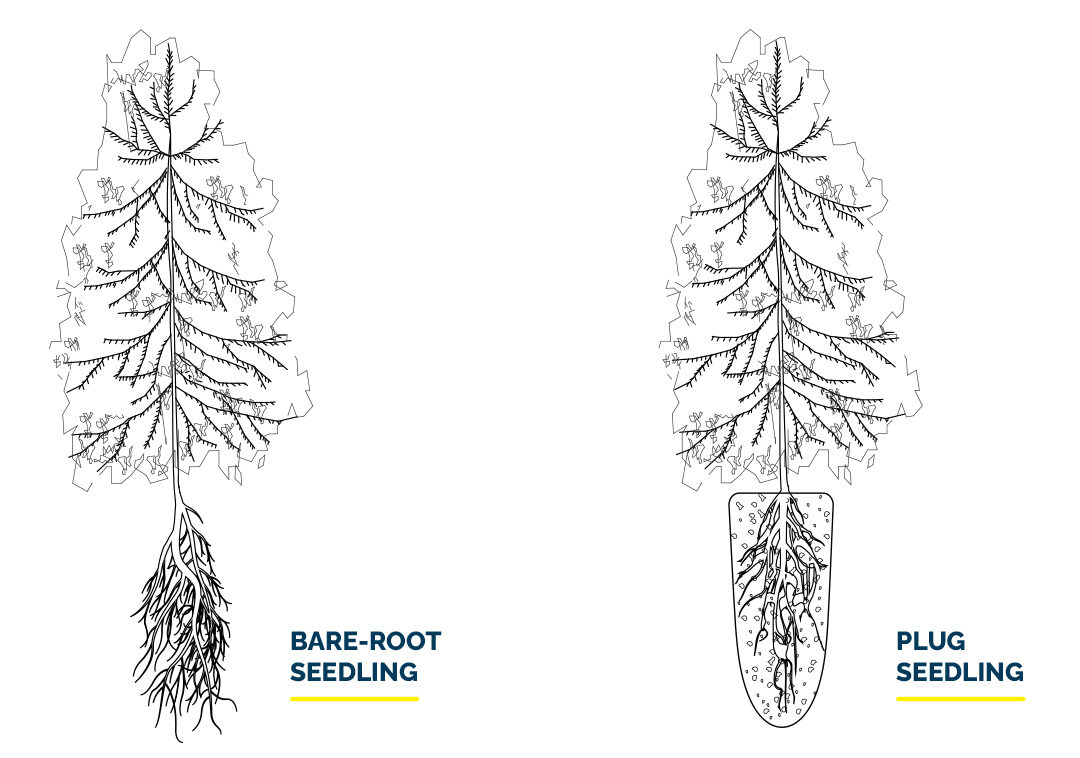Once a site is selected, you can make choices that will increase the likelihood of planting success. This section includes information and considerations for site preparation, including how to pick a healthy specimen and its handling and care.

1. Pick a healthy specimen
Tree species should be considered based on aesthetic appeal, hardiness zone, size, form and most importantly, site conditions of the growing location. Choosing a tree that will succeed in a location increases its long-term survival and reduces maintenance and potential risks. Additionally, it allows the long-term benefits of the tree to be realized. When possible, increase species diversity by choosing trees from various plant families. To minimize conflicts and reduce maintenance needs, trees should be visualized at mature size.

Nursery stock
- Choosing a healthy tree starts with a reputable nursery.
- Pick trees with evenly spaced branches and strong, straight trunks. For most trees, there should only be one central leader stem, which will develop into the trunk. Shrubs should have a symmetrical form with no gaping spaces.
- Buy from local sources, as those species have been proven to succeed in your climate and have been acclimatized to the area.
What to look for
- Foliage: Conifer seedlings should have at least 2/3 of the stem length exhibiting live, healthy foliage that is free of disease. Foliage should not be wilting or damaged, and the leaf colour should be appropriate for the season.
- Root mass: Look for an even and strong root flare (where the roots join the trunk). There must be adequate root mass to form a cohesive plug. Roots should not be pot-bound if in containers, and soil should not easily fall away.
- Any disease infecting the main stem is unacceptable.
- Insect damage can be present, but stock with significant damage is unacceptable.
- Environmental damage: Generally, frost or drought damage that kills buds, foliage or roots is unacceptable. Minor amounts of damage may be acceptable.
Trees can be purchased in various stock types: bare-root, containerized, container grown, balled and burlapped, as well as seedlings.
Bare-root
- Usually small and easy to transplant.
- Planted during the dormant season before roots and buds begin to grow.
- Vital that the roots be kept moist and stored cold, but not frozen.

Containerized/Container grown/Balled and burlapped
- Commonly found in nurseries.
- Can be planted any time of the year when the ground is not frozen.
- Remove containers before planting, including biodegradable containers.
- Check the roots systems, as some will have matting along the container wall; remove or pull apart.

Seedling plugs/pots
- Typically found in evergreen species; grown from seed in trays.
- The soil in the cell is “plugged” by the seedling roots.
- Easy to handle and plant.

Other things to consider when selecting a tree species are mature size and growth rate. Trees are classified into different height classes. Strongly consider the mature tree size when selecting a tree for a specific location, as there can be a difference of more than 30 metres in height between a very small tree and a large tree. Growth rates will be influenced by the site’s conditions, i.e., soil, water, drainage, light exposure.
GROWTH RATE & CONSIDERATIONS:
Fast
- Can grow up to 60 cm or more in height annually. Great to fill space quickly.
- Often tolerant of poor soil.
- Often have weak or brittle wood, prone to break easily in weather events.
Moderate
- Grows 30–60 cm in height annually.
- Often have attributes of both fast and slow growing.
Slow
- Grows 30 cm or less in height annually.
- Often long-lived species, with strong defense mechanisms to resist pests and disease.
- Strong, dense wood with strong branch attachments.

2. Handling and care of tree seedlings
Handling
- Aim to avoid physical damage such as broken tops, injured bark, stripped foliage or torn roots.
- When transporting, always hold the seedling by the root ball, supporting the weight of the tree with the container.
- Trees should not be held by their branches.
Transportation and delivery
- Transport trees in a covered vehicle; this helps protect the needles, branches and leaves from physical damage from wind and dehydration. If trees are being transported in an open vehicle, bring a mesh tarp to cover and protect the canopy.
On-site handling
- Schedule delivery to minimize holding time on-site. If planting is postponed, the trees/shrubs stored on-site should be protected and watered.
- Adequate moisture must be provided to the roots to avoid desiccation of the root system.
- If trees are held on-site for any significant length of time before planting, the root ball should be checked daily and kept moist. If possible, leave the trees in a shady area.
Additional reference information can be found in the Canadian Nursery Stock Standard.





